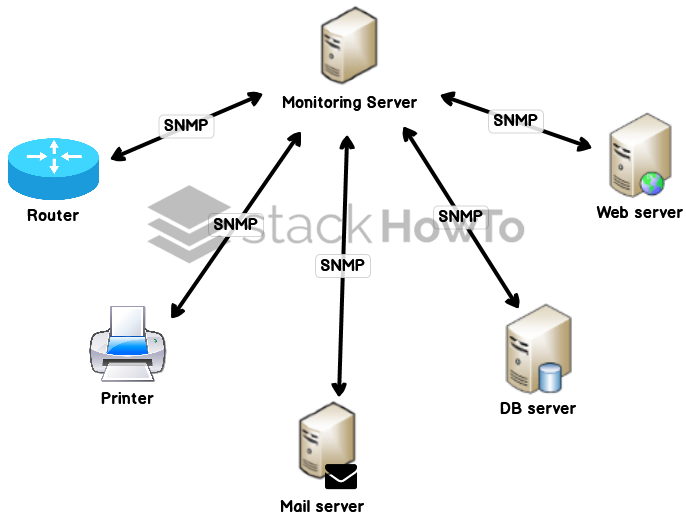What is SNMP used for? With example
In this tutorial, we are going to see What is SNMP used for? With example. SNMP stands for Simple Network Management Protocol. It is a protocol that allows network administrators to manage network equipment and diagnose network problems.
Example of SNMP:

How does the SNMP protocol work?
SNMP is based on two main elements: a supervisor and agents. The supervisor is the console that allows the network administrator to execute management requests. Agents are entities that are located at each interface connecting the managed equipment to the network and allowing to retrieve information about different objects.
Switches, hubs, routers, and servers are examples of devices containing manageable objects. These manageable objects can be hardware information, configuration parameters, performance statistics, and other objects that are directly related to the current behavior of the device in question. These objects are classified in a kind of database called MIB (“Management Information Base”). SNMP allows communication between the supervisor and the agents in order to collect the desired objects in the MIB.
The network management architecture proposed by the SNMP protocol is therefore based on three main elements:
- Managed devices are network elements (bridges, hubs, routers or servers), containing “managed objects” that can be information on the hardware, configuration elements or statistical information;
- Agents, i.e. a network management application residing in a device and responsible for transmitting local device management data in SNMP format;
- Network management systems (NMS), i.e. a console through which administrators can perform administrative tasks.





